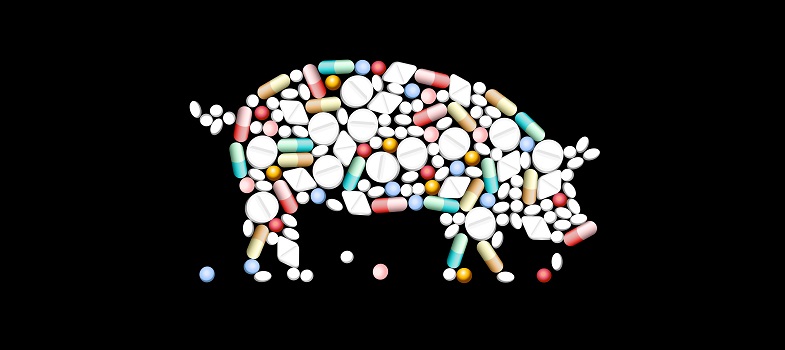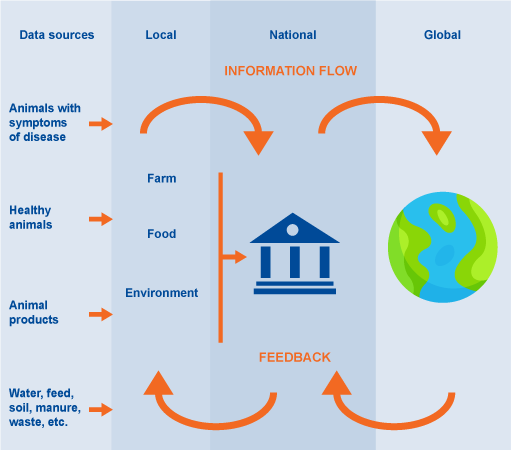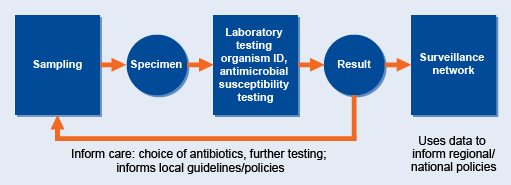3.2 The flow of samples, information and feedback
Surveillance data can have different uses at the individual, group, national or global level, which should correspond with the purpose of the surveillance systems.
For example, at the individual and farm level, in animals with disease, data can be utilised to improve animal health by informing treatment decisions (i.e. choice of therapy). When individual or group-level data are aggregated and analysed at local and/or national level, they can inform prescribing guidelines and identify key actions.
Figure 10 shows the general flow of information in the surveillance systems. It starts in the data sources, explained in the previous section, as part of the local surveillance. The information needs to be reported nationally and globally, to address the AMR challenge.
To summarise:
- at the individual or group level, surveillance data allow veterinary and animal health professionals to make better informed clinical decisions to ensure better animal health outcomes
- at the national level, surveillance data guide policy and ensure appropriate and timely animal health and public health interventions
- at the global level, surveillance data could provide early warnings of emerging threats and data to identify and act on long-term trends.
Local surveillance is the cornerstone of AMR surveillance. Figure 11 shows the journey of the sample, from sampling to the surveillance network, and points where decisions are taken. Data collected by local surveillance sites are reported and collated to provide a national overview of AMR.
Local surveillance comprises six broad task areas, all of which are critical for good quality data:
- collecting/receiving specimens and logging specimen and relevant clinical information
- performing tests
- monitoring and documenting data
- interpreting data
- reporting and communicating test results to the person submitting the test
- reporting and communicating results/data beyond the laboratory (local/national/global).
Activity 7: The flow of information and feedback
In this activity you will consider how AMR surveillance in animals works in your country. You can consider the country in general, or focus on a specific scenario that you are familiar with, such as AMR surveillance in poultry, fish or meat products.
Use a piece of paper to draw a diagram of the connections among stakeholders, flow of information and feedback – to support your thinking.
- Explain the flow of information in the AMR surveillance system through each of the surveillance activities: data collection, data validation, data analysis and interpretation, dissemination and reporting.
- Is there feedback of information? What type of feedback and where?
Answer
- You may find that there are some gaps in the flow of information, or that the surveillance activities in your system follow a slightly different flow. This is usual, and may highlight where improvements could be made. You may want to discuss this with your supervisor.
- This could be to farmers, senior colleagues, policy-makers or the wider scientific community in published reports. Information may be used at the local, national or global level.
3.1 Data sources





